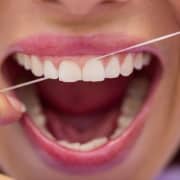5 Tips for Maintaining a Healthy Smile
Maintaining a healthy smile is important for both the appearance of your teeth and the overall health of your mouth. Here are some tips for keeping your smile bright and healthy:
1. Brush Teeth Every Time You Eat
Proper tooth brushing is essential for removing plaque and preventing tooth decay. Use a toothbrush with soft or medium bristles and a fluoride toothpaste, and make sure to brush for at least two minutes each time. It’s important to brush your teeth thoroughly, including the fronts, backs, and tops of your teeth, as well as your tongue.
2. Floss Daily
Flossing helps to remove plaque and food particles from between your teeth, where your toothbrush can’t reach. Be sure to floss at least once a day to keep your mouth healthy. If you find traditional flossing difficult, there are many alternative options available, such as water flossers and interdental brushes.
3. Eat a Healthy Diet
A balanced diet is important for the health of your teeth and gums. Avoid sugary foods and drinks, as these can contribute to tooth decay. Choose foods that are rich in vitamins and minerals, such as fruits, vegetables, and nuts.
4. Drink Plenty of Water
Water helps to rinse away food particles and bacteria from your mouth, helping to keep your teeth and gums healthy. Aim for at least eight cups of water a day.
5. Get Comprehensive Dental Care
Regular visits to your dentist in Katy, TX are an important part of maintaining a healthy smile. This might include filling cavities, repairing damaged teeth, or treating gum disease. Don’t neglect your dental care – it’s easier and less expensive to prevent problems from occurring than it is to fix them once they happen.
By following these tips, you can help to keep your smile healthy and beautiful for years to come. Contact your dentist in Katy, TX today to book your appointment!











